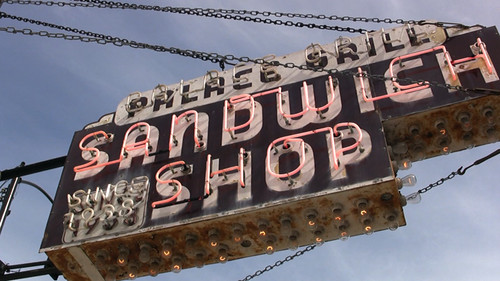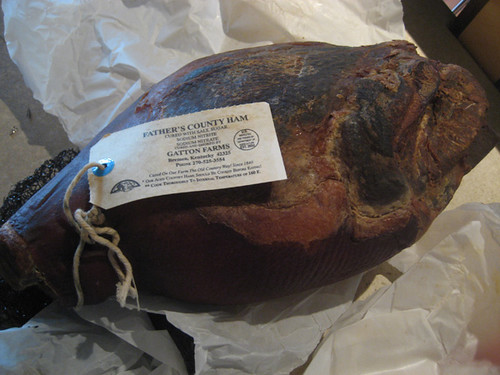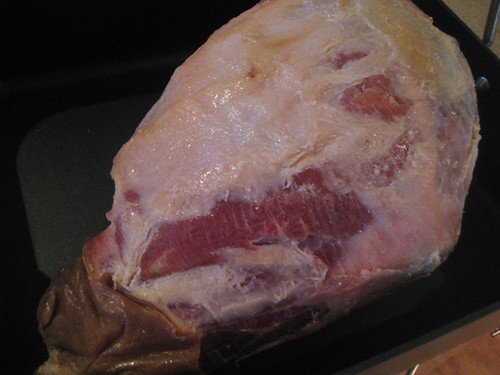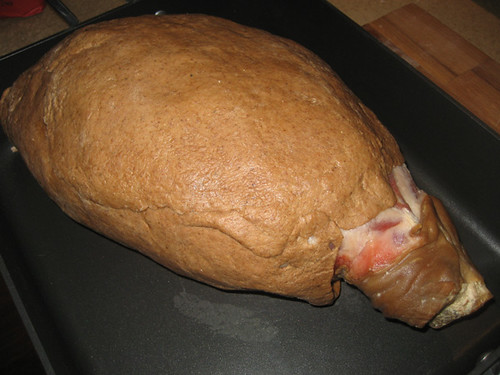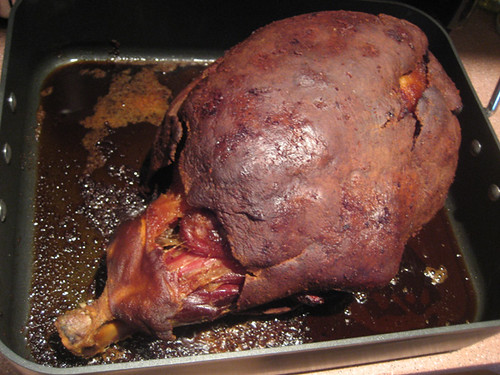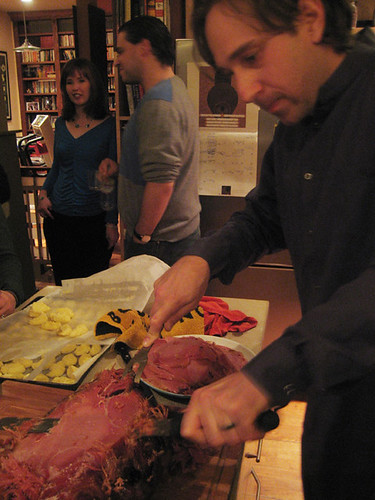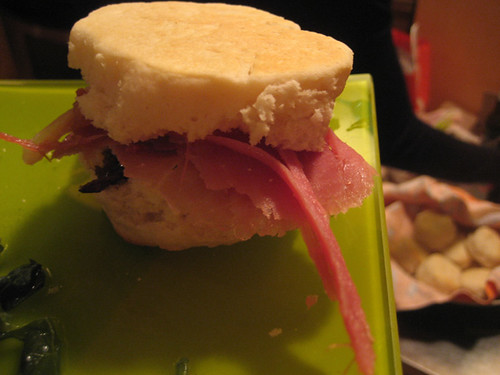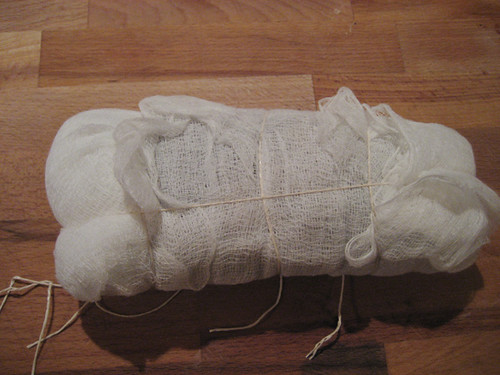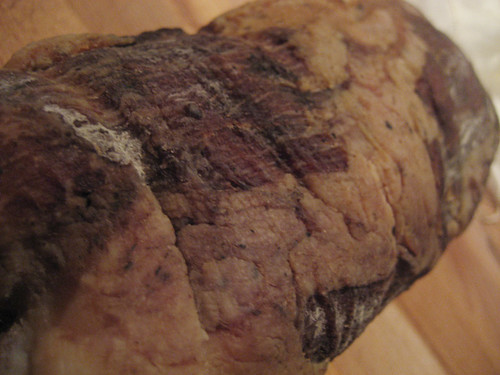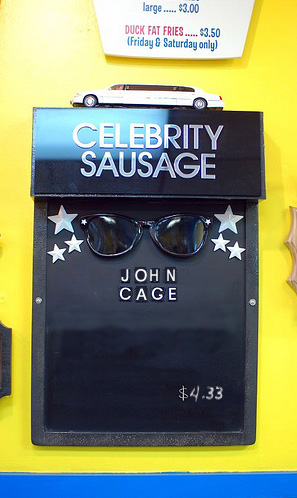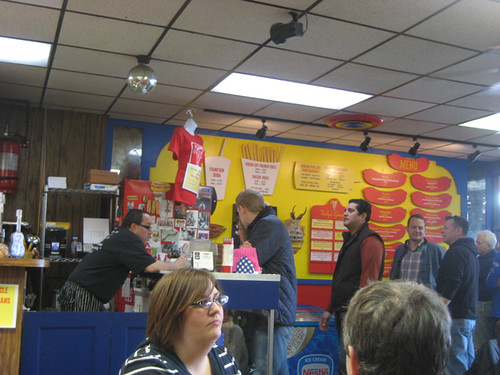Books have been piling up at ye olde Baconarium, awaiting fuller reviews, so I will here dispatch three of them briefly but not any less completely, I hope, including one of particular note to LTHForum readers:
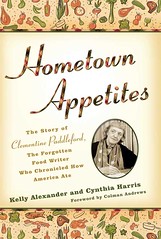
I first heard of Clementine Paddleford like almost anybody who’s heard of her did— from a Beard award-winning article in Saveur reviving her memory as a pioneering writer about regional food dashing around the US in her self-piloted plane. Now the author of that article and the keeper of Paddleford’s papers at Kansas State (her alma mater and hometown) have expanded it into a full biography, Hometown Appetites, which should restore her rightful place as a foodie patron saint. From the 40s to her death in 1967, she was probably the best known food writer in America, working for what was then the most interesting New York paper (not the Times but the Herald Tribune, employer of everyone from James L. Cain to Tom Wolfe) and its Sunday supplement This Week, which was distributed nationwide like Parade, except that it was actually literate.
There’s a lot about Paddleford that we would like today— her interest in regional traditions, her egalitarian tastes, her no-nonsense Kate Hepburn-style feminism— although it’s unlikely that her writing will enjoy a full revival; the bits included in the book seem chirpy, can-do in a way that’s too corny for modern tastes. Ironically, in real life she mostly couldn’t do; she wasn’t much of a cook, and stuck to the local color while the recipes were churned out by the Herald Tribune’s test kitchen. (In this way she may well have inspired Barbara Stanwyck’s kitchen-incompetent magazine writer in Christmas in Connecticut.)
Still, she was respected in her time— H.L. Mencken, who might have made a rich satiric target out of a middlebrow tastemaker like her, instead commissioned a serious anthropological piece from her on church suppers— and deserves to be remembered. The reason she wasn’t is that everything she worked for went out of business right around the time she died, so there was no institution to promote her memory, as the Times has done for the likes of Claiborne and Franey.
The life is interesting too, at least at first. Small town girl, gawky and not physically attractive but plenty captivating to men attracted by brains, moves to Chicago and then to New York, hustling her way to various lucrative freelance gigs on both the editorial and advertising sides at once; she marries a fella from back home, and before long he seems to be the one male she’s not interested in sleeping with. (Paddleford destroyed a lot of personal correspondence, but enough hints of her sex life survive to indicate that she was unabashed and independent; one ex-lover’s ashes occupied her mantle for years, and when she adopted a dying sorority sister’s little girl, it was widely assumed, wrongly, that that was just a story to cover up her own pregnancy out of wedlock.)
At the time she entered magazine writing, women’s magazines were mostly run by clueless men trying to dictate scientific home management notions to women, and she was a leading figure in bringing a down to earth woman’s point of view to women’s magazines and, as a result, expanding their and her own popularity. Tragedy struck early on— throat cancer nearly killed her and left her with an open trachea covered by a brooch and a throaty whisper, which somehow only added to her odd allure.
The story of her rise in such a male-dominated world is great reading; the story of her long and fairly uneventful survival at the top is less so. Still, if the story is exciting only up to a point, there are plenty of middle-American recipes that look worth a try as well. You could do worse than reading the book and then having a dinner in honor of old Clem, the fearless feminist barnstormer of the American kitchen.

UPDATE: As soon as this review went up, the 5-Step site was pulled down. (Of course, it is still available if you know where to look. Not that its availability or not should affect your decision about this book, useful on its own terms.)
Disclosure: When Gary Wiviott first devised his method for teaching the basics of barbecuing several years ago, I built the original Wiviott 5-Step Website; and from time to time reading Low & Slow, a sentence would pop out at me (if no one else, I’m sure) as having been written by me, as I expanded Gary Wiviott’s sometimes cryptic notes or phone comments into prose helpful to BBQ newbies like I was then.
Dozens of people have since followed the program to learn the rudiments of successful slow cooked BBQ, as noted in the otherwise rather exiguous acknowledgements, which raises the question why one should pay $19.95 for 256 pages of something that works in ten pages for free. Of course, the answer is that no one buys barbecue books, they give them, to middle-aged men they are otherwise stumped as to gift ideas for. As Wiviott himself notes on pg. 13:
It’s a well-known phenomenon that once you have the reputation of being a serious barbecuer, people who know nothing about barbecue will begin giving you books, celebrity-endorsed tools, and accessories that you should never use. My motto: Accept graciously, re-gift rapidly.
If this is one worth hanging onto, it’s because the goal of Wiviott and his cowriter, Colleen Rush (The Mere Mortal’s Guide to Fine Dining), is to undo all the bad habits of all those other books, geegaws and whatnot that you’ve been gifted with over the years. Barbecue was invented as a way to cook meat while you were busy doing other things, like roping cattle or converting Native Americans to Catholicism at swordpoint, and so not only does it not require a lot of messing with with fancy techniques and tools, it’s usually harmed by them. Keep It Simple Stupid, as Wiviott says (often), and you’ll most likely come out better.
At the same time, even amplified at two or three times the length of the website version, this lesson comes nowhere near book length (hence obvious padding like a quiz at the end of each chapter). It’s also true that while the additional material is often more in-depth in explaining why marinades or brines do what they do, say, that kind of length and digressiveness might be fine for reading on a wintry off-season evening, but isn’t necessarily as direct and, well, simple to consult as the website in the middle of a cook.
So the rest of the book is filled, inevitably, with recipes. I approached these with a certain skepticism; once you get past the meat, tastes in BBQ-land tend to be pretty whitebread-pedestrian, and the recipes in barbecue books tend to be either the kind of macho appetizer/gutbomb that a sensible person eats warily, or the kind of bastard fusion (Thai sweet and sour ribs with pineapple salsa) that should be confined to chain restaurants named O’Hooligan’s or The Fudge Dispensary.
Wiviott is guilty of the former on occasion— dragon turds, sausage-stuffed jalapeno peppers, make an inevitable appearance under a more family-friendly name in this surprisingly, for him, G-rated and rather sobersided book. But his considerable grounding in real Asian and Latino ethnic cuisines (he was, like me, one of the founders of LTHForum, a fact the back cover gets slightly wrong) means that when he brings in a flavor from outside U.S. borders, it comes in pretty authentically. The templates for how to create things like rubs, marinades and brines are quite useful when it comes to offering the aspiring BBQist a platform for their own experimentation and creativity, and there’s an eclectic range of mostly good-sounding, barbecue-friendly side dishes from corn pudding to smoked tomato bruschetta or Thai cucumber salad.
As one of the founders of LTHForum many years and worlds ago, I take pride whenever one of our now mostly scattered company of amateurs graduates to greater professional accomplishments— Morowitz and Gardner with The Local Beet, Hammond’s ever-thoughtful print and radio essays, Cathy Lambrecht’s and Melissa Graham’s involvements across wide and productive spectrums of the Chicago food scene, or my own piece of a James Beard award nomination for Sky Full of Bacon. It’s a well-organized, genuinely useful book, of which both authors (I of all people should not forget Rush standing there just out of the limelight) should be proud. Father’s Day is June 21st.
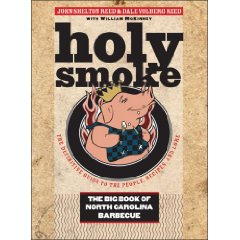
Teach a man to cook barbecue and you’ve given him something to talk about for a night, but teach him the cultural history of barbecue and you’ve given him something to argue about for a lifetime. Slowly, we’re building up a shelf of key histories of the major barbecue-producing regions; Texas had Robb Walsh’s Legends of Texas Barbecue Cookbook (despite the title, more history than recipes) and now North Carolina has Holy Smoke: The Big Book of North Carolina Barbecue.
Two quotes from journalists in the book sum up North Carolina barbecue: “No man has ever been elected governor of North Carolina without eating more barbecue than was good for him,” and “Write about the succulent glories of Tar Heel barbecue at one’s peril. It’s much safer to take on the National Rifle Association.” That gives some sense of the importance in public life of BBQ, the swaggering white-frat-boy pride taken in it, and the deep and embittered divide between the two main styles (vinegary Eastern style and ketchupy Piedmont style).
Not having a pig in this fight, I sometimes rolled my eyes at the exaggerated xenophobia displayed by the academic authors, engaged in the perennial game of slumming and getting real with the people over barbecue. (Especially since the one thing that unites easterners and Piedmontese is slagging on Texas barbecue. A little of that goes a long way.) Still, the 75 pages of cultural history that launches the book is an admirably thorough and flavorful account of BBQ’s role in everything from labor movements to German immigration (that’s probably who put the ketchup in the sauce), accompanied by a scrapbook’s worth of flavorful photos and graphics.
It’s followed by 100 well-detailed pages on cooking a whole hog, making sauces and sides like cornpone (no Thai cucumber salad here), and finally, a series of oral histories with many of the most noted figures in North Carolina barbecue.
To be honest, the oral histories get a bit repetitive, and I haven’t read them all yet (for a representative sample, read Ed Mitchell on how he got started), but the point isn’t that you need to read them all, but that someone has gotten the words of these BBQ masters down before they’re all gone. That section will make Holy Smoke a primary source for many years to come.



 Posted in
Posted in 




